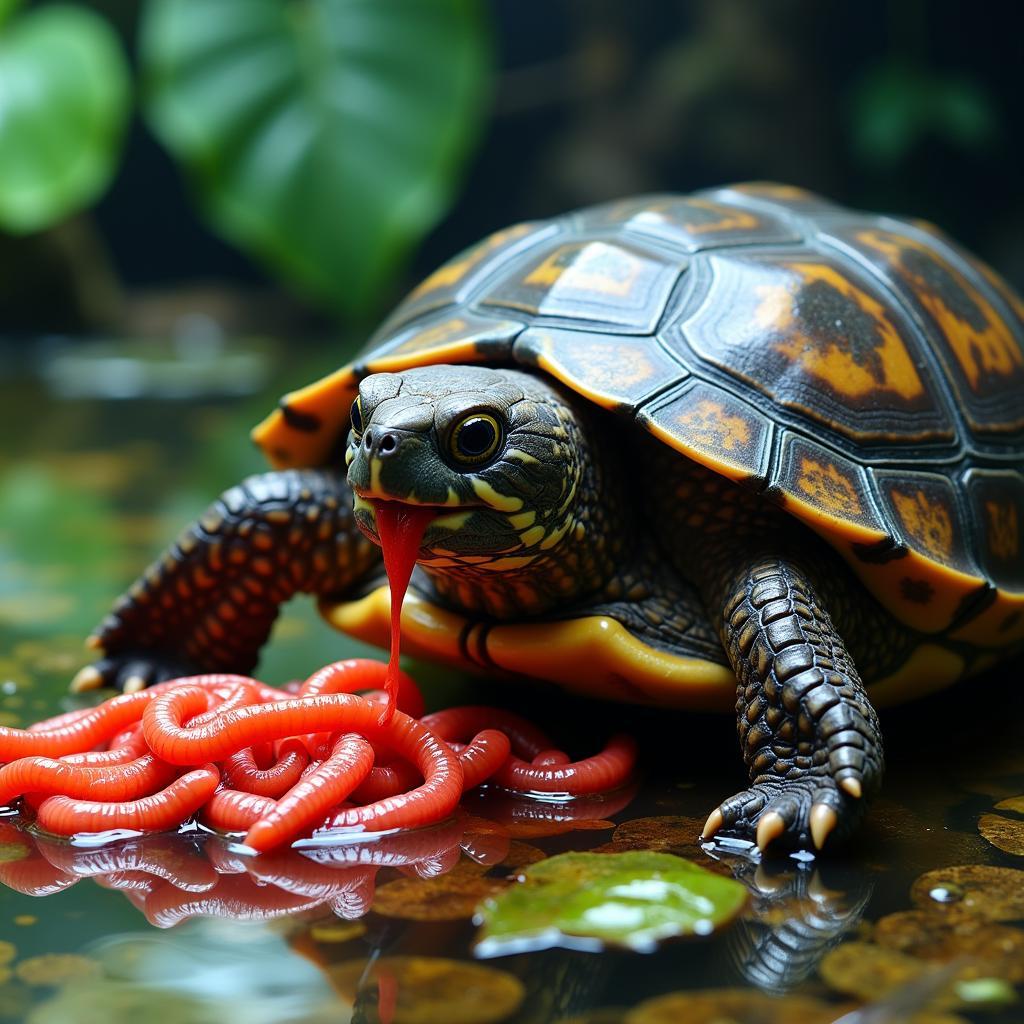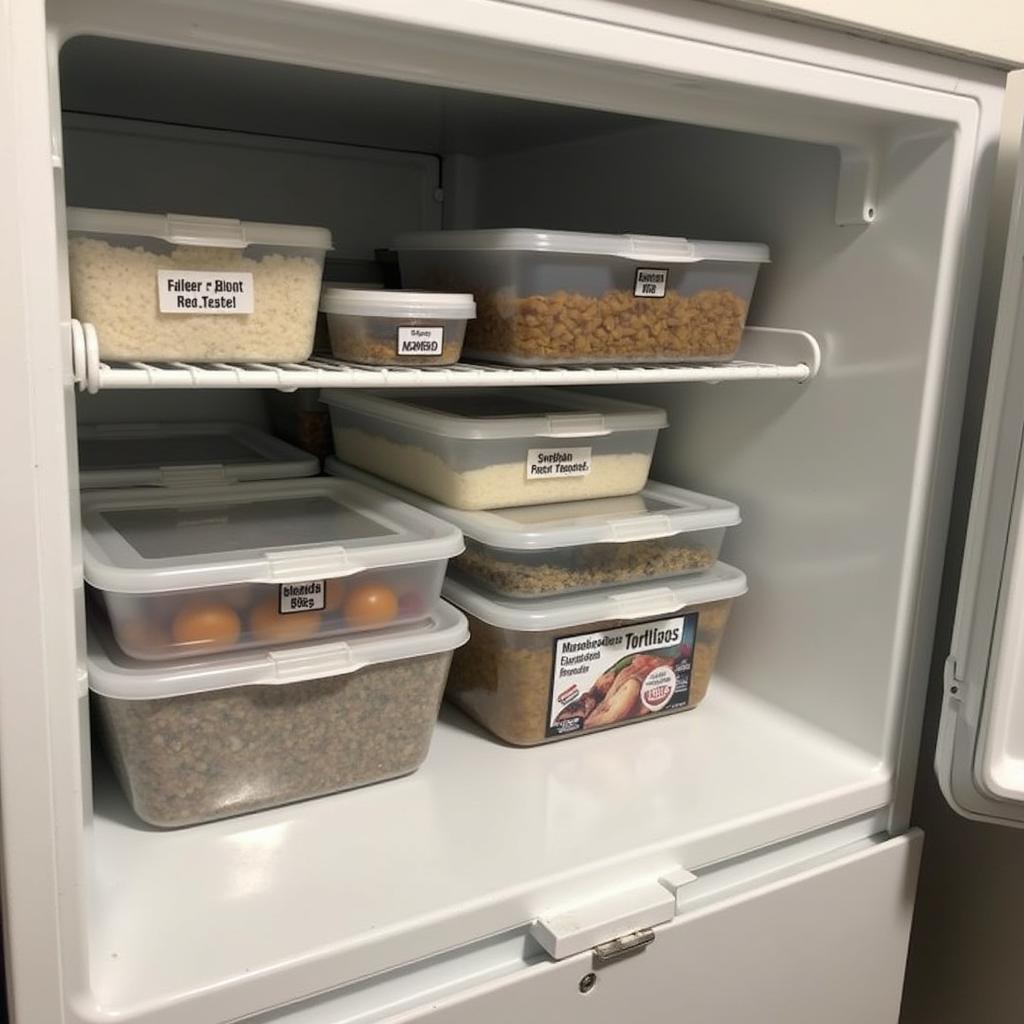Frozen Turtle Food offers a convenient and often nutritionally-rich way to feed your shelled companions. From readily available commercial options to homemade frozen mixes, there’s a frozen food solution for every turtle owner. Let’s dive deep into the world of frozen turtle food, exploring its benefits, various types, and how to use it effectively.  Various types of frozen turtle food, including bloodworms, brine shrimp, and reptile pellets.
Various types of frozen turtle food, including bloodworms, brine shrimp, and reptile pellets.
Understanding the Benefits of Frozen Turtle Food
Frozen turtle food boasts several advantages. Firstly, it’s often more nutrient-dense than some dried foods, as the freezing process helps preserve vitamins and minerals. Frozen food is also a great way to offer variety in a turtle’s diet, mimicking the diverse foods they would encounter in the wild. turtle stick food can also be incorporated alongside a frozen diet. Imagine a delicious frozen block of brine shrimp – it’s like a gourmet meal for your turtle! Secondly, frozen foods are readily available and can be stored for extended periods. This makes them a practical choice for busy turtle owners. What’s more, many frozen turtle foods come pre-portioned, making feeding time a breeze.
What are the advantages of using frozen turtle food over live food? While live food offers a stimulating hunting experience, it can be challenging to source reliably and safely. Frozen options eliminate these concerns, providing a safe and convenient alternative. Plus, you won’t have to worry about crickets escaping and chirping in your house!
Choosing the Right Frozen Turtle Food
The best frozen turtle food depends on your turtle’s species. Aquatic turtles, for instance, relish frozen bloodworms, brine shrimp, and krill. reptile food in general is diverse, and frozen options replicate this diversity. These foods are rich in protein and other essential nutrients. For semi-aquatic and terrestrial turtles, you can find frozen mixes containing insects, worms, and even small fish. It’s crucial to research your turtle’s specific dietary requirements to ensure you’re providing them with the optimal nutrition.
How do you know if the frozen turtle food you’re buying is high quality? Look for brands that specialize in frozen reptile food. Check the ingredient list for whole prey items and avoid fillers or artificial additives. Reputable brands will also clearly state the nutritional content of their products.
 A turtle eagerly eating frozen bloodworms in its aquatic habitat.
A turtle eagerly eating frozen bloodworms in its aquatic habitat.
Preparing and Serving Frozen Turtle Food
Before feeding, always thaw frozen turtle food completely. This prevents digestive issues for your turtle. Never microwave the food, as this can destroy essential nutrients. The best method is to place the frozen block in a small bowl of room temperature water or leave it in the refrigerator overnight. Once thawed, you can feed the food directly to your turtle. How much frozen food should you feed your turtle? The quantity will vary depending on the species, age, and size of your turtle. It’s always best to consult a veterinarian or a reptile specialist for personalized guidance. They can help you create a balanced diet plan that meets your turtle’s specific needs.
Is it safe to feed frozen turtle food every day? While frozen food can be a regular part of a turtle’s diet, it shouldn’t be the only source of nutrition. A varied diet, incorporating fresh vegetables, fruits (for some species), and high-quality turtle pellets, is essential for overall health and well-being.
Storing Frozen Turtle Food Effectively
Proper storage is vital to maintain the quality and safety of frozen turtle food. Keep it in the freezer until ready to use. Once thawed, do not refreeze any leftover food.
 Properly stored frozen turtle food in a freezer, organized in labeled containers.
Properly stored frozen turtle food in a freezer, organized in labeled containers.
Conclusion
Frozen turtle food offers a nutritious, convenient, and readily accessible option for nourishing your pet turtle. By understanding the different types available, proper preparation methods, and storage guidelines, you can ensure your shelled companion thrives on a diet that meets their specific needs. Remember to always research your turtle’s individual dietary requirements and consult a veterinarian or reptile expert for personalized advice. With the right care and nutrition, including incorporating turtle stick food as part of a balanced diet, your turtle can live a long, healthy, and happy life.
FAQ
- Can I feed my turtle frozen food every day?
- What are the best frozen foods for aquatic turtles?
- How do I thaw frozen turtle food?
- How much frozen food should I feed my turtle?
- Can I refreeze thawed frozen turtle food?
- Where can I buy frozen turtle food?
- Is frozen turtle food better than live food?
Dr. Emily Carter, a renowned herpetologist, suggests, “Frozen food can be an excellent source of nutrients for turtles, but it’s crucial to select high-quality options and offer a varied diet.”
Dr. Michael Davies, a veterinary nutritionist, adds, “Always thaw frozen food completely before feeding to avoid digestive upset in your turtle.”
For support, contact us at Phone: 02437655121, Email: [email protected], or visit our address: 3PGH+8R9, ĐT70A, thôn Trung, Bắc Từ Liêm, Hà Nội, Việt Nam. We have a 24/7 customer service team.